Some cats can be quite vocal about what they want. It might be cute the first time your cat meows at the door when they want to go outside, but this can quickly turn into an annoying habit. Cats are quick learners, so if you let your cat out when they sit at the door and meow, they’ll soon start doing this each and every time that they want to go out.
Whether you have a cat that’s allowed outside and prefers for you to open the door for them rather than use a cat flap or an indoor cat that loves going for walks on their harness and leash, they may sit at the door and meow. The good news is that cats are clever, and it’s totally possible to teach them not to do this!

The 8 Ways to Prevent Your Cat Meowing to Go Outside
1. Reward the Good Behavior, Not the Bad

When training your cat, the key is to ignore the bad behavior and instead reward the good. If your cat is sitting at the door meowing, don’t give them any attention. That includes negative attention, like telling them to be quiet! Instead, give your cat praise and treats when they’re doing something quietly, like playing with their toys or using their scratching post.
If you do want to take your cat for a walk on their harness and leash, wait for a moment when they’re quiet, and then put their harness on. The same applies if your outdoor cat does want to go outside. Wait until they’ve stopped meowing, and then open the door. If your cat connects their meowing with being let outside, you’re inadvertently rewarding them and encouraging them to continue that behavior.
2. Add Enrichment to Your Cat’s Indoor Environment
If your cat seems to want to go outside frequently, maybe that’s simply because it’s more exciting than the inside of your house? The outdoors is full of interesting sights and smells to keep your cat occupied. There may also be things to jump on, scratch, and explore.
By adding plenty of enrichment to your cat’s indoor environment, you can offer these experiences to your cat without them having to ask to go outside. Offering a variety of cat trees, shelves, and scratching posts for your cat to explore is a good way to keep them entertained inside. You can also make sure you play with them regularly. Offering puzzle toys and treasure hunts using pieces of kibble or treats hidden around the house is also a great way to keep your cat entertained.
We're quite fond of cardboard as a material in cat scratchers, which is why we love the Hepper Hi-Lo Cat Scratcher. Encased within a well-constructed, modern birch plywood frame, this scratcher is designed with both cats and their owners in mind. It offers three versatile configurations to keep your feline friend active and entertained while enticing them to fulfill their natural scratching instincts (and away from scratching things they shouldn't). For more details, click here! At Catster, we’ve admired Hepper for many years, and decided to take a controlling ownership interest, so that we could benefit from the outstanding designs of this cool cat company!
3. Make Sure Your Cat Is Getting Enough Exercise
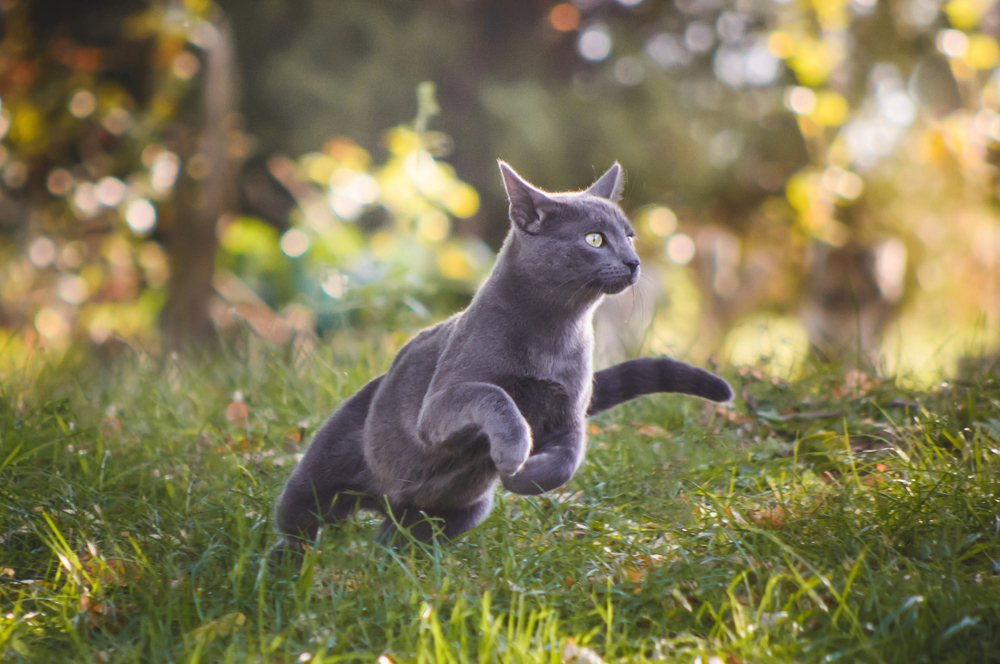
Your cat may simply be a little bored and wants to go outside to run around. Persuading your cat to indulge in inside playtime can be a good way to make sure they’re getting enough exercise instead of demanding to go outside all the time. Toys attached to a fishing rod-style handle are almost universally adored by all cats, so that’s a good place to start!
Consider investing in interactive toys to occupy your cat when you can’t play with them too. Cats have a natural hunt, kill, eat, groom, sleep cycle of sorts, so by helping your cat achieve the hunting part of their cycle (by playing with them), it’s more likely that they’ll be happy to eat some food, clean themselves, and then settle down for a long nap.
4. Spend Time Teaching Your Cat Tricks
Cats enjoy plenty of interaction with their owners, and many of them love learning tricks. This can be a good way to keep them mentally and physically challenged, which may reduce their desire to go outside. Positive reinforcement using a clicker and rewards like treats is a great way to train your cat. You can teach them all sorts of fun tricks, including rolling over, coming when called, jumping into their cat carrier, and more!
5. Install a Cat Door

Please be mindful that allowing your pet cat to roam unsupervised through a cat door isn’t always safe. Cats can be very destructive towards the local fauna and are also at risk while they roam. They are vulnerable to physical confrontations, ingesting poisons (such as rodenticides), injuries, ending up lost or displaced, unexpected weather, being preyed on by larger animals, and contracting diseases or other illnesses when they roam unsupervised.
If your cat is allowed both indoors and outdoors, consider installing a cat door. If they’re constantly meowing at the door because they want to go outside, that can become frustrating for you both. By installing a cat door, you can allow them to decide when they want to go outside, and their meowing will likely decrease as a result.
If you’re worried about your cat being able to go outside at night, you can get cat doors with a lock, so you can keep them inside at certain times. You can also find cat doors with RFID readers or that use a special tag on your cat’s collar, so you can be sure that neighborhood cats won’t be coming inside your house too! However, keep in mind that such doors won’t work if your cat loses their collar (which is where the corresponding pairing device is often incorporated).
6. Have the Vet Check Your Cat for Health Problems
Sometimes, a constant meow can be a sign of an underlying health condition. If your cat is in pain, they may become more vocal. They may not necessarily want to go outside but happen to be standing by the door as they’re meowing. If your cat is elderly and has started meowing more, you may want to ask your vet to assess your cat for cognitive dysfunction.
If you are concerned or have questions about your cat’s health, you can also speak to a vet from the comfort of your own home to help make a plan. They can determine when an in-clinic vet visit should be made.
If you need to speak with a vet but can't get to one, head over to PangoVet. It's an online service where you can talk to a vet online and get the advice you need for your pet — all at an affordable price!
7. Spay or Castrate (Neuter) Your Cat
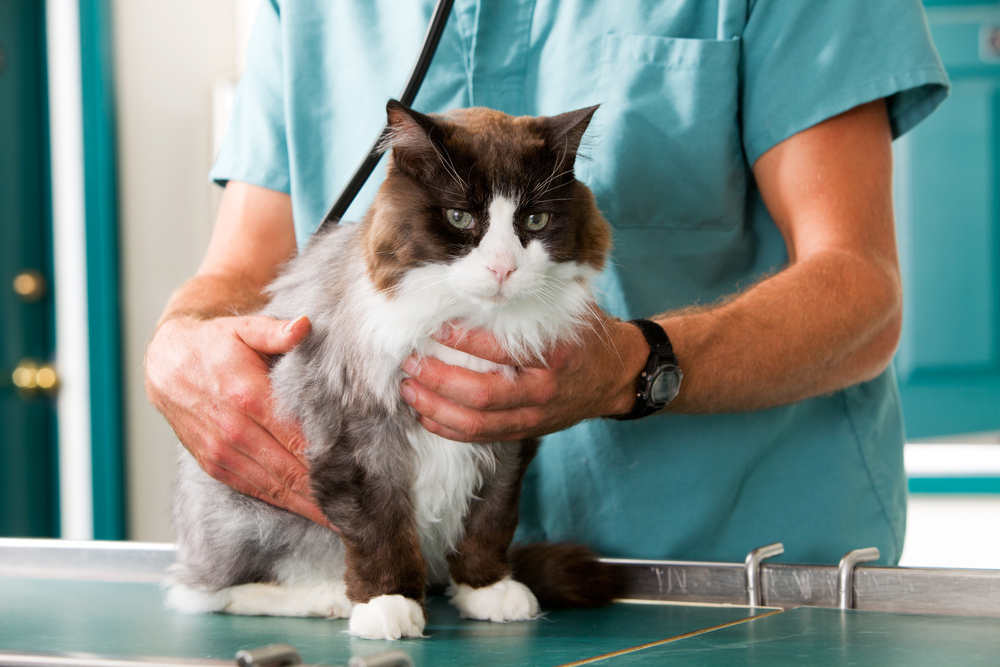
In some parts of the world, the term “neuter” is used interchangeably with castration or orchiectomy, which is a surgical procedure to desex an intact male. The term isn’t necessarily sex-specific though, and at times may be used to describe the desexing of an intact female too.
If your cat isn’t spayed or castrated (neutered), then they may be trying to go outside to find a mate. Female cats can become vocal when they’re in heat, so if your cat’s meow sounds more like a yowl, then it’s a good indication that she’s in heat. Male cats who haven’t been neutered can also meow frequently if they smell or hear a female cat in heat. His hormones will be telling him that he needs to find her, so he may spend a great deal of time meowing by the door in an attempt to get outside.
The best way to deal with this situation is to book your cat in to be spayed or castrated (neutered). Most vets recommend these procedures for cats that won’t be used for breeding programs. Besides reducing hormonal behaviors, like vocalizations, it can also decrease the chances of certain health conditions.
8. Install an Outdoor Cat Enclosure
If you take your indoor cat for a walk on a harness and leash, but you notice that they seem to want to go outside more often than you can accommodate, consider installing an outdoor cat enclosure with easy access from the house. There are plenty of designs out there, or you can even build your own to suit your exact requirements. Make sure your cat can access their enclosure from a window, or install a cat flap and teach your cat how to use it. This way, your cat can have constant access to the outdoors in a safe environment. There will be no more meowing to go outside!

Conclusion
There are many reasons why a cat may meow at the door, but teaching them not to do this is relatively simple. Rewarding your cat for good behavior, spending some quality time with them, or simply installing a cat door should usually solve the problem, but there may be rare cases where you need to get your cat checked with a vet to rule out any health problems.
See Also:
Featured Image Credit: sophiecat, Shutterstock
Contents
- The 8 Ways to Prevent Your Cat Meowing to Go Outside
- 1. Reward the Good Behavior, Not the Bad
- 2. Add Enrichment to Your Cat’s Indoor Environment
- 3. Make Sure Your Cat Is Getting Enough Exercise
- 4. Spend Time Teaching Your Cat Tricks
- 5. Install a Cat Door
- 6. Have the Vet Check Your Cat for Health Problems
- 7. Spay or Castrate (Neuter) Your Cat
- 8. Install an Outdoor Cat Enclosure
- Conclusion




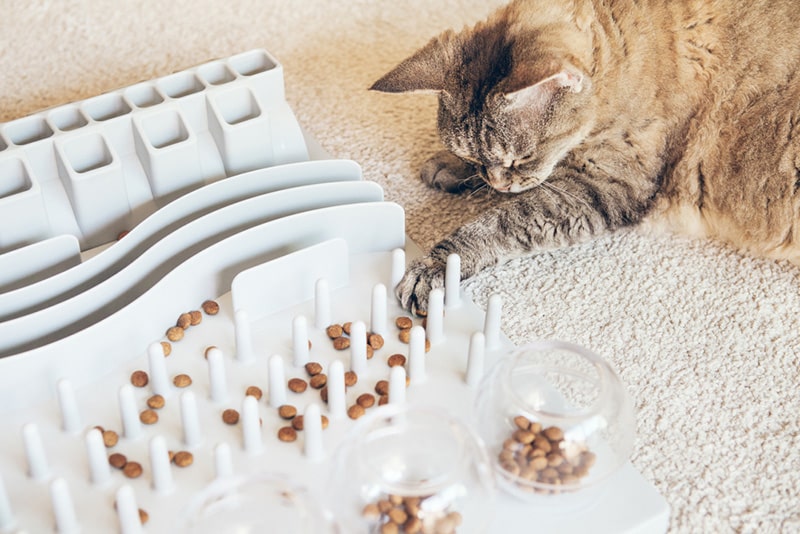
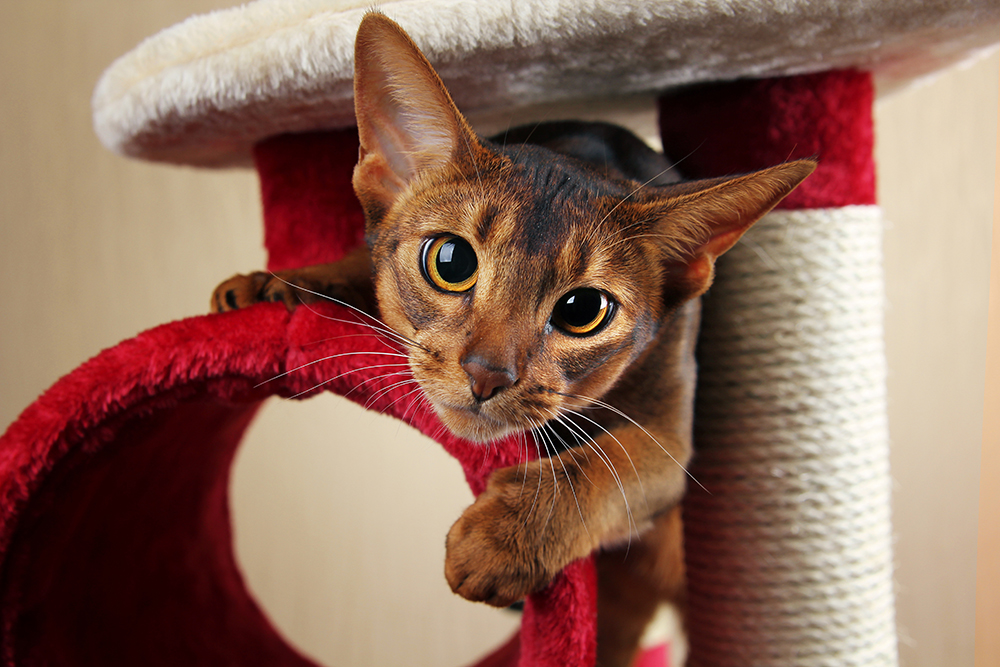
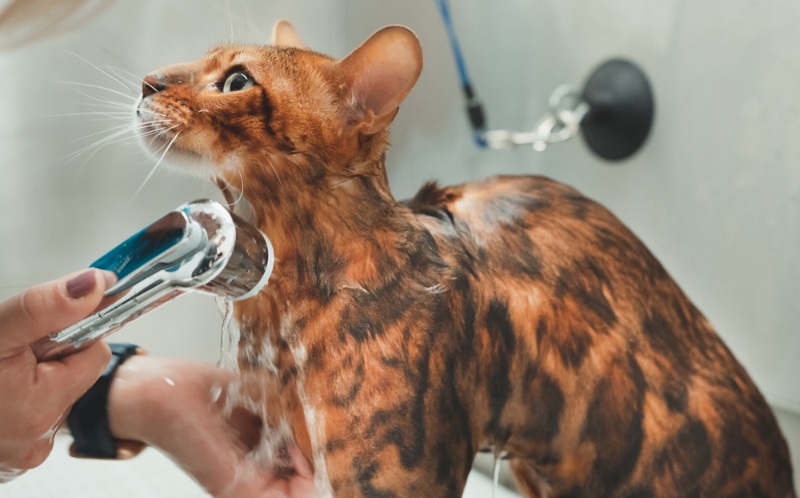



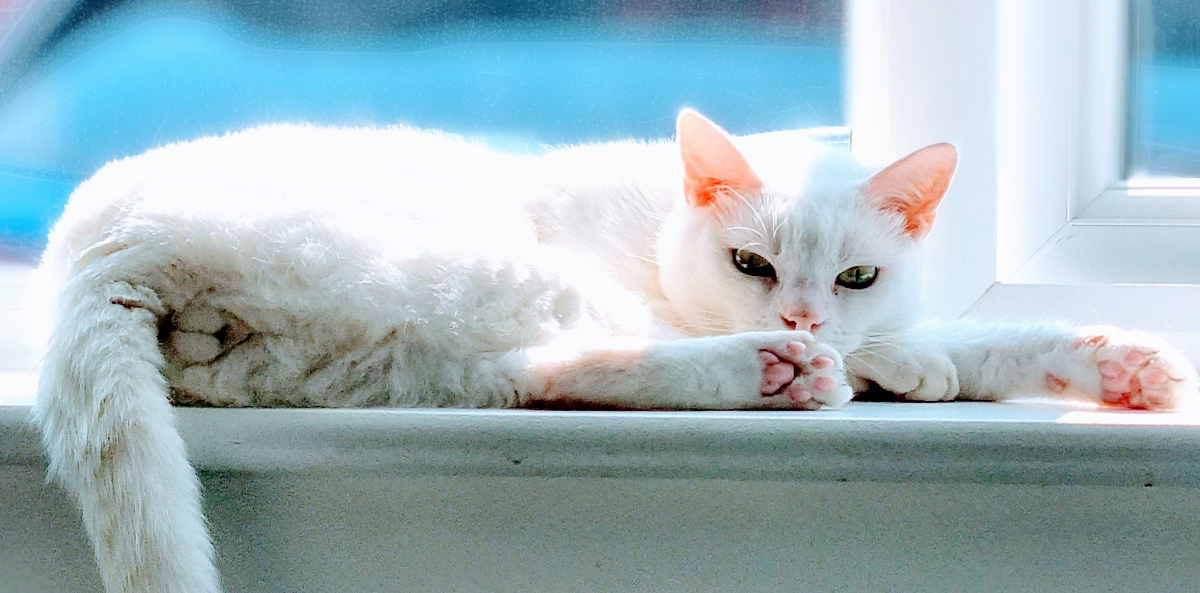

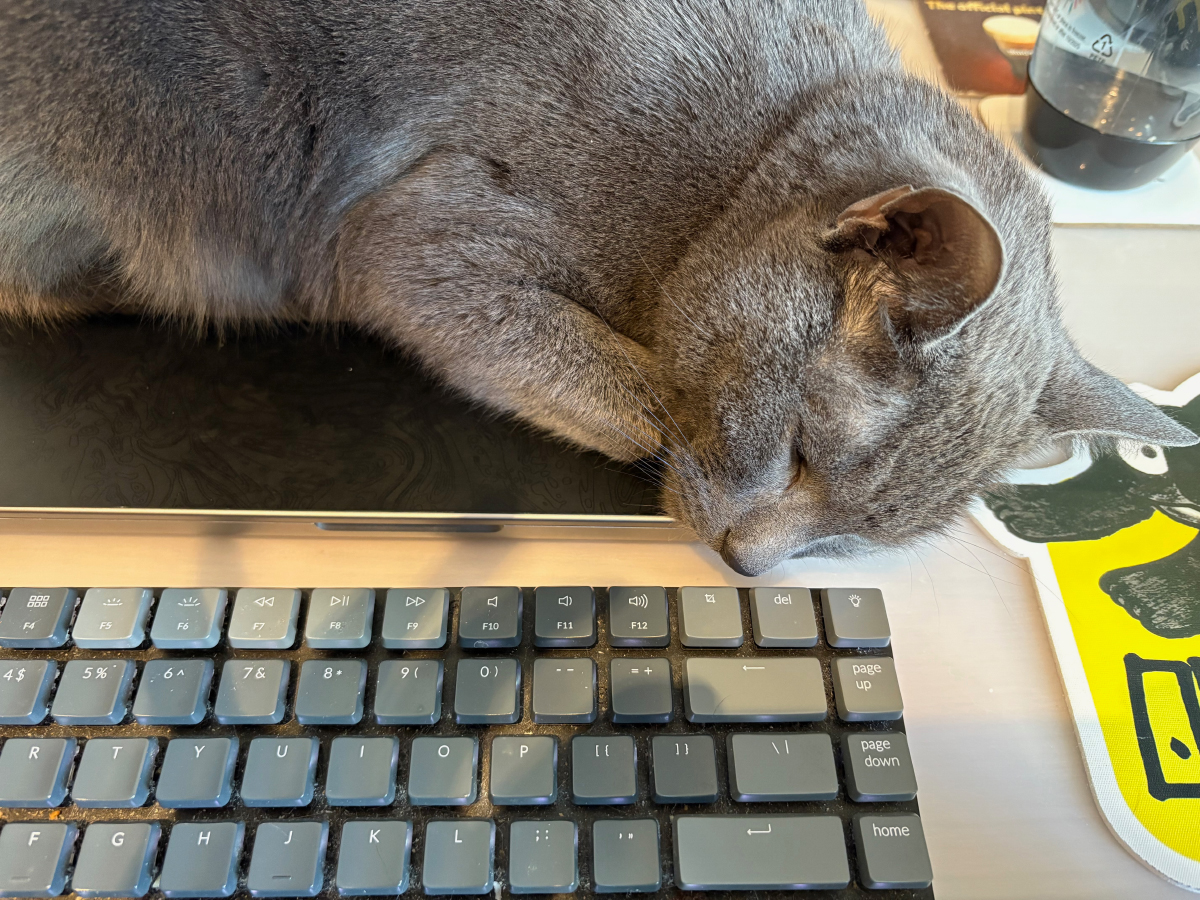
I honestly wish I could reward my cat for stopping his meowing after incessantly meowing; when he sees me walk over to him after his meowing stops, he starts meowing again. I'm just afraid that I will reinforce the meowing.
Dear Brock,
thank you for your comment and sorry for a bit of a late answer. Cats can be sometimes tricky, because they are very independent and have their own minds, however there is always a reason for their behavior so tackling that one first could be a great way to help with excessive meowing. We would like to suggest you our other articles on this matter:
– Why Does My Cat Keep Meowing? 7 Reasons Why They Won’t Stop – https://www.catster.com/cat-behavior/why-wont-my-cat-stop-meowing/
– Why Does My Cat Meow So Much? 6 Reasons (Vet Answer) – https://www.catster.com/ask-the-vet/why-does-cat-meow-so-much/
– How to Get Your Cat to Stop Meowing: 4 Vet-Approved Methods – https://www.catster.com/cat-behavior/get-your-cat-to-stop-meowing/
Just paste the URL into your browser.
If you would still need some help, we would like to recommend you setting up an video-call appointment with on of the veterinarians at www.PangoVet.com. They will be happy to consult your situation and help.